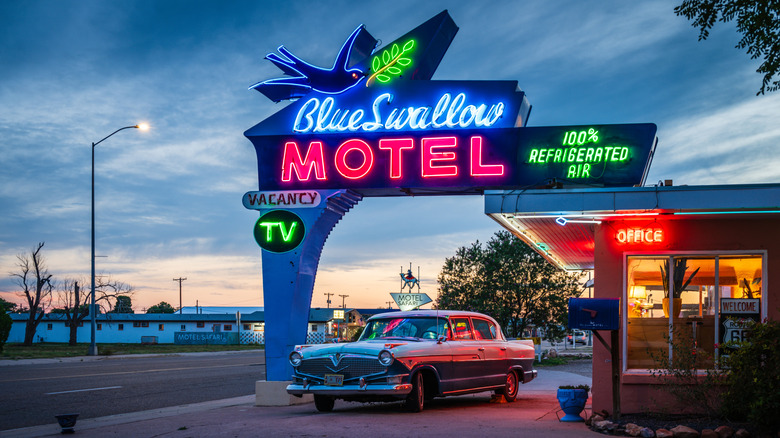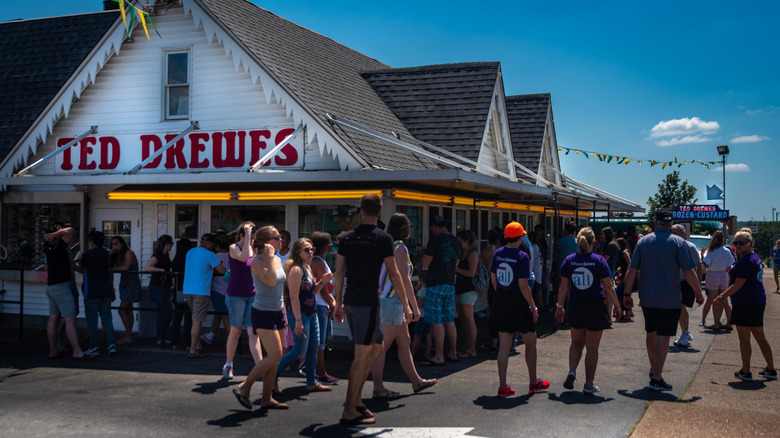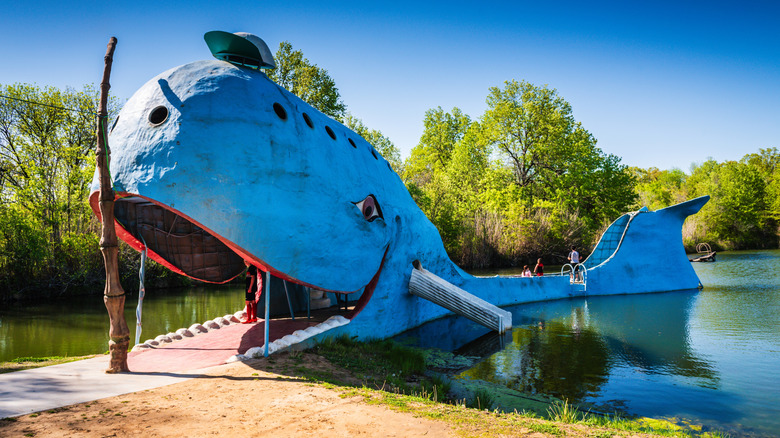From California To Chicago, This 'Mother Road' Route Delivers Neon Nostalgia And Kitschy Americana
Route 66 is more than just a highway; it's an American legend and a symbol of freedom and the American Dream. Known as the "Mother Road" and the "Main Street of America," Route 66 once stretched 2,448 miles, connecting Chicago, Illinois, to Santa Monica, California. The symbolism of Route 66 is one of opportunity, as its formation led to the migration of Americans westward at a crucial point in history, the Dust Bowl.
In 1985, however, Route 66 was declassified as a federal highway after the creation of America's present-day Interstate system bypassed most of the original route. Despite portions of Route 66 being replaced or destroyed, around 85% of the original route remains intact and drivable in its segmented remnants. Modern navigation apps and Route 66 tours have made the historic highway and the best nostalgic attractions in each state along Route 66 a present-day bucket-list journey.
Both ends of Route 66 are easy to reach, but visitors can fly into either of Chicago's major airports to begin at the original starting point. O'Hare International Airport is around an hour away, and Midway International Airport is 30 minutes from the starting point. Rental cars are available at both airports for out-of-town travelers renting a vehicle for their Route 66 trip. Whether you're starting in Chicago or Santa Monica, the journey through what remains of Route 66 is packed with neon-lit diners, kitschy landmarks, and all the quirky Americana that has made the highway a cultural icon for the ages.
Classic Route 66 from Chicago to Tulsa
Beginning in downtown Chicago at the intersection of East Adams Street and Michigan Avenue, opt for the trip's first of many photo ops at the historic "Begin Route 66" sign. Before leaving Chicago, start with another Route 66 tradition: "the first stop on the mother road," Lou Mitchell's all-day breakfast diner, opened in 1923 along the original westbound route.
Heading southwest through Illinois, you'll encounter six segments of the original route intact and drivable, aside from the final 13 miles in the state. From the Route 66 Welcome Center and Raceway in Joliet to the highway's Hall of Fame & Museum in Pontiac, Illinois, the 301 miles of historic highway in the state are packed with nostalgic memorabilia. Route 66 primarily follows the present-day US Interstate 44 from Illinois into St. Louis, Missouri.
Aside from visiting the famous Gateway Arch, one of the only US National Parks situated entirely within a city, there's another St. Louis Route 66 icon to visit. Ted Drewes Frozen Custard is Americana at its finest. Opened in 1931 in St. Louis and 1941 on the historic route, this frozen custard stand's Chippewa location has been a popular stop for travelers along Route 66 for decades. The classic highway spends only 13 miles in Kansas, the shortest run of all its states, before crossing into Oklahoma. Once in this state, Tulsa is home to the epitome of Route 66 overnight stays: the neon-lit Desert Hills Motel, a true vintage experience before heading west.
Kitschy Route 66 stops in the West
Before leaving Oklahoma, stop in Catoosa, a small suburb of Tulsa, to see the Blue Whale of Catoosa, one of the most iconic stops on Route 66 in the state. Continue on I-40, and at exit 85 in Amarillo, Texas, stop at the Big Texan Steak Ranch for a unique 72-ounce steak challenge, Texas craft brews, and a stroll through the Slug Bug Ranch, an installation of painted Volkswagen Beetles that is similar to Amarillo's Cadillac Ranch.
A halfway marker in Adrian, Texas, marks the 1,139 miles to Chicago and Los Angeles, but back on I-40, Route 66 continues into New Mexico. In Tucumcari, New Mexico, the Blue Swallow Motel is a pastel desert motel right off old Route 66. A bit further along in this Route 66 town, vintage charm and eclectic attractions like the Teepee Curios, eateries like La Cita, and the Route 66 Monument deliver all the kitsch of Route 66.
Across the border into Arizona, a stop at Petrified Forest National Park, the state's most stunning, lesser-known national park offers classic desert landscapes and trails. On the final 480 miles from Flagstaff to Los Angeles, you'll find towns like Seligman, Arizona, often considered the birthplace of the Route 66 revival. The California Desert towns of Needles and Oro Grande round out the trip as the highway winds through Los Angeles to Santa Monica, where a modest "End of the Trail" sign marks the symbolic end of Route 66 on the Santa Monica Pier.


